The Making of Trollmother
Trying to explain my process for making Trollmother. Spoilers, if that's a concern.
I knew I wanted it to feel Scandinavian, and I knew I wanted something primarily menu-oriented, but for a long time I wasn't sure how to approach the competition theme.

The earliest version of the game was just the main menu, adapted from a troll-themed Figma phone menu mockup I'd done for Halloween the previous year. At that point it didn't even have “mother” in the title.
The music was another early addition. I'm not a musician, but because I'm not I figured I'd get it sorted early, so I wasn't bogged down when I had some momentum and a deadline approaching. I just kept putting bits of old folk songs into the GB Studio music maker, looking for something that sounded right to me.
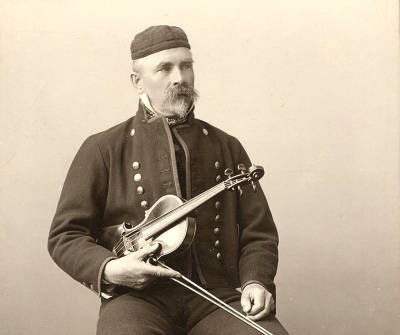
Had a breakthrough with “Trollens brudmarsch” by Pelle Schenell (“bridal march of the trolls”, bridal marches notably a separate phenomenon from wedding marches), whose music should be well within the public domain. The march formed the basis of most of the soundtrack – edited and elaborated upon, but the central hook intact.
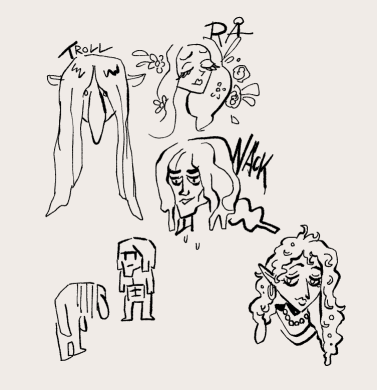
Early sketches already establish Näcken and the Skogsrå/Huldra as major non-troll characters, both being iconic creatures of folklore in Scandinavia.
It was only at this point that the idea of a troll raising a human child started crystalizing, inspired by old stories of changelings and of children being sent off by their parents to die (like Hansel and Gretel). I figured it would be an interesting angle on “You are the Monster” to have the “monster” be a nurturing presence.
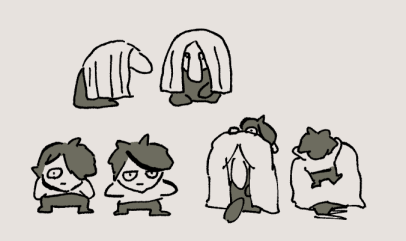
I considered exploration elements, wandering around the world with the child to interact with NPCs and unlock new activities. The idea was abandoned early – there was just no way I'd have time for it and I'd risk making the overall design feel unfocused.
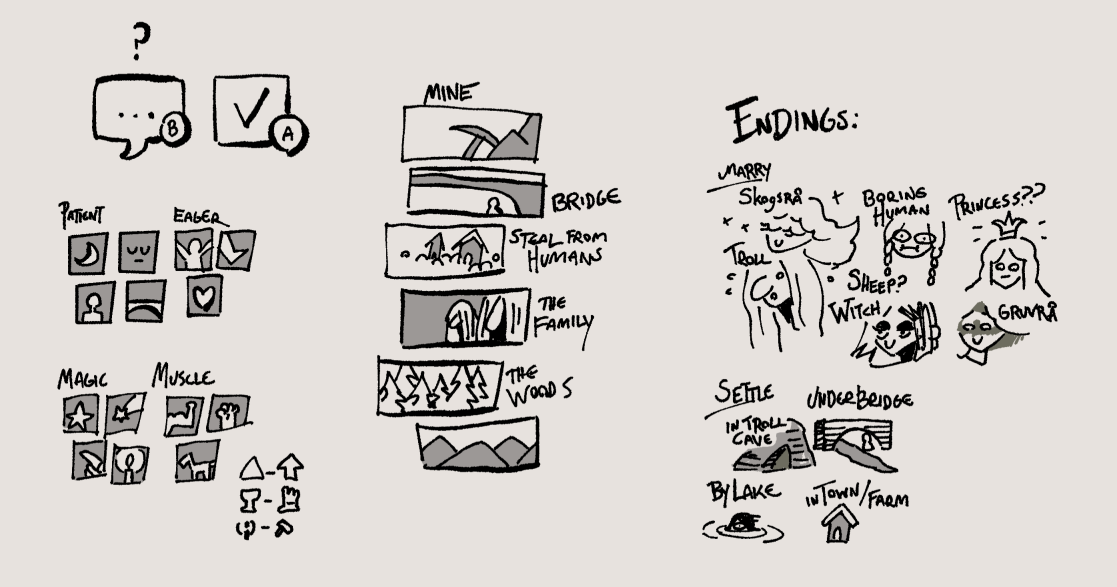
Then came stats, activities, and UI-design.
The opposing stat pairs were inspired by the Choice of Games style of interactive fiction. Figured it would make the stats more compact (for the sake of the Game Boy), and introduce an interesting strategic element to stat building (since you can never max out more than half your stats).
Sidenote: It's funny how Ida shows up in early notes as the “boring human”. I think she turned out genuinely likeable.

I decided early on to try to fit all the information you needed for the planning stage in a single screen. Year, season, stats, available activities, locked activities, and chosen activities.
Halfway through development I still hadn't conclusively decided on the 5th and 6th activity types, and I felt like I needed 6 of them for game balance. Initially you just picked an activity in the menu and was sent there immediately. I found it more satisfying to plan out three in advance, especially with how the month-slot icons for different activities flow into each other.
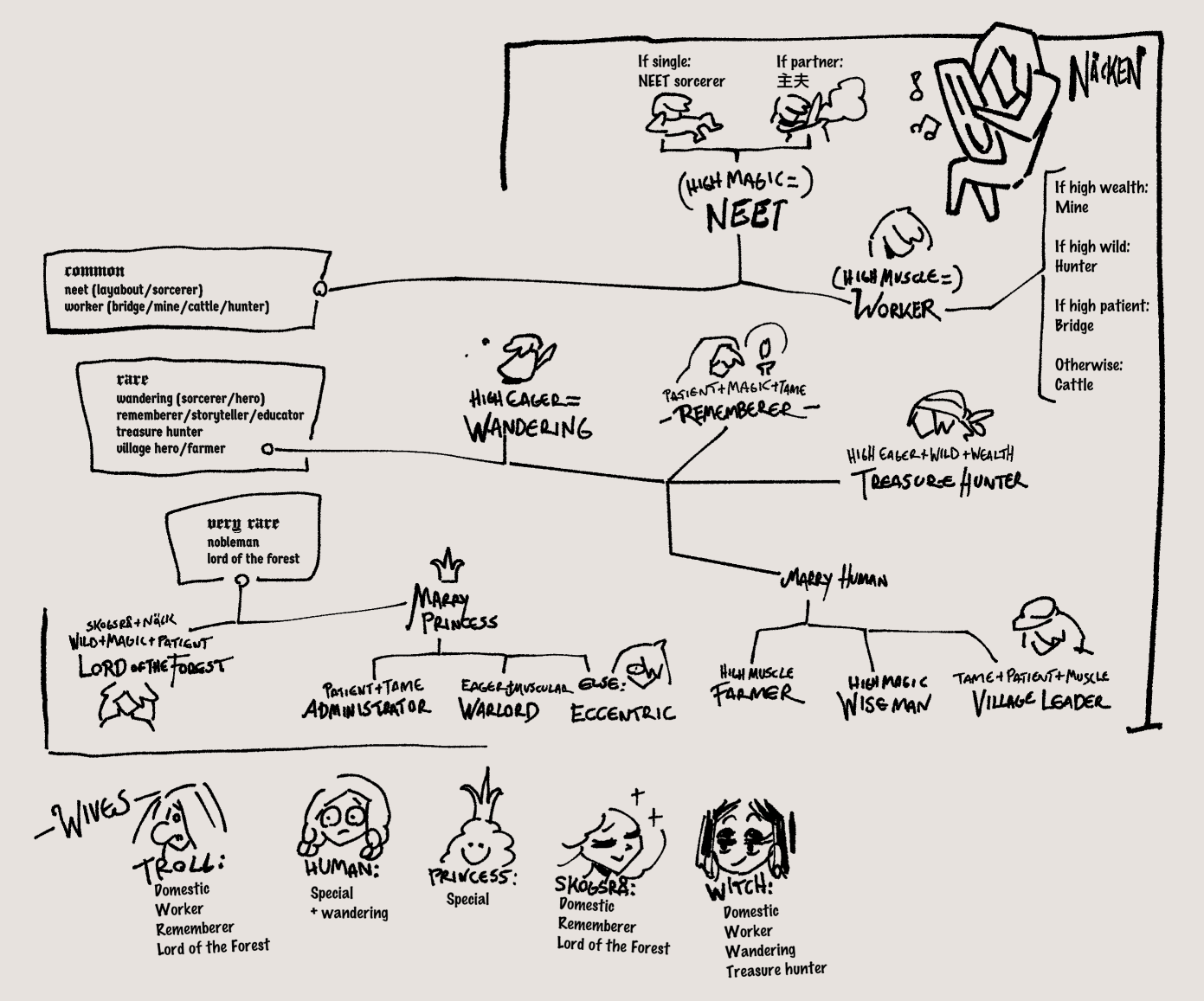
As a narrative game, it was always going to be text heavy. I also felt that character building games like this require multiple end states to feel entirely satisfying, so I started at the end, planning out potential endings before I'd written anything else.
I spent about half the development time just writing and still had to cut a lot of planned content. The witch, for example, never appears in endings in the Jam release, despite a lot of endings still having unused placeholder scenes for her. The Lord of the Forest ending is also, unfortunately, entirely absent from the Jam release.

I drew most of the portraits by hand before translating them to pixel art. I find that my pixel art feels less derivative when I do. And yes, the princess was originally planned to be a sheep. The main reason that this changed, honestly, was that I found the portrait size-difference with the frog to be funnier.
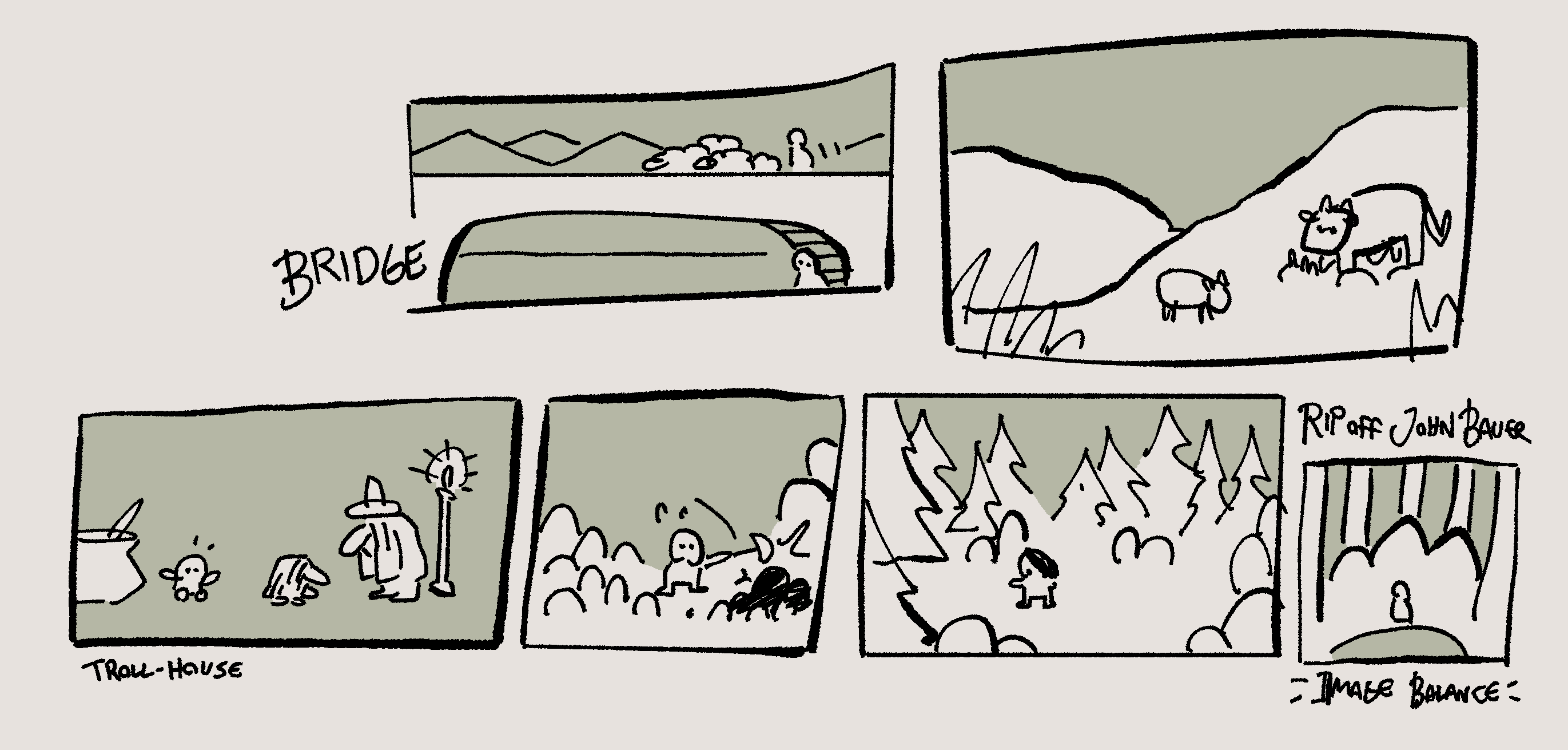
The activity backdrops went through a number of revisions and are heavily inspired by the work of illustrator John Bauer. Above all, I tried to emulate his approach to illustration, the distinct flatness and composition balance that he favours, which give his illustrations an almost sacral quality.
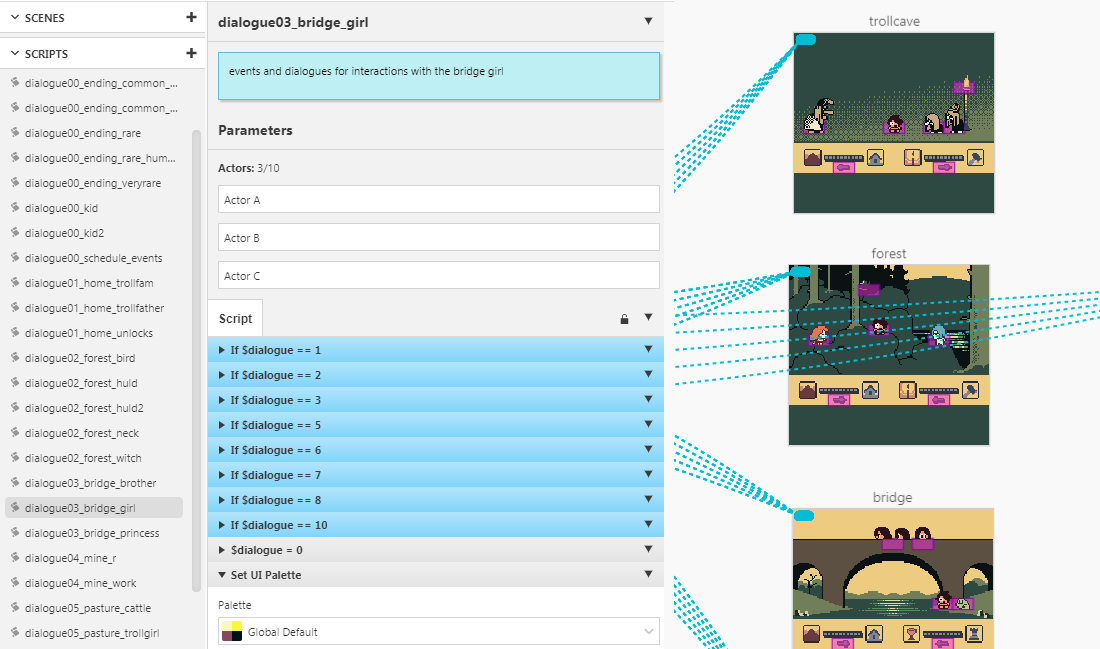
My GB Studio setup relied heavily on scripts for dialogue. I'd put all events relating to a particular character in a script (or sometimes two, since I'd run into GB Studio's limit for number of items contained in a single script and cause game-breaking bugs) and then call those scripts from the scenes I'd set up for different activities.

I also used scripts to call sound effects, even stat increases, so I could edit these from a single source.
This kept everything neat and easy to navigate, made adjustments quicker, and likely prevented a lot of problems later in development.
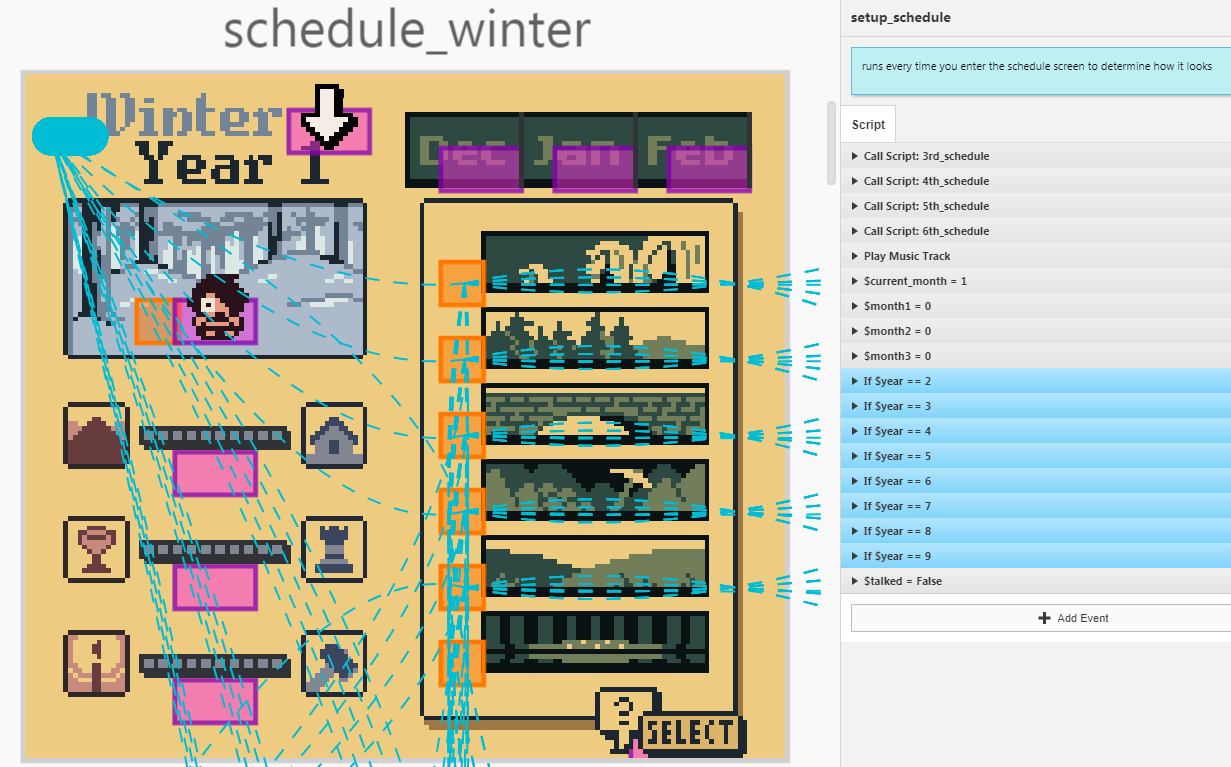
I kept a setup script for the schedule, which reset all the UI functionality and checked current year and activity unlocks for purposes of tile swapping.
The schedule is already one actor away from the GB Studio scene actor limit, so tile swapping was essential. I would've had to spread it out over several scenes without it. I considered using tile swapping for other UI elements as well, but since it swaps all identical tiles in the scene I often fell back on sprites in the end. Using it for the stat bars, for example, would've been a nightmare.

Speaking of stat bars, displaying stats was one of the technical challenges I worked on the longest. GB Studio doesn't have a straightforward in-engine solution for stat bars and I tried a variety of workarounds.
What I arrived at in the end was a sprite with one frame for every step along the bar, and then calling individual frames by checking the stat variable. Each stat has two variables. One is from 1-100 and is directly altered by activities (+/-5 at a time), then converted to another variable that goes from 1-10 (which is the actual stat). The 1-10 stat is then checked by stat bars and stat dependent branching and events.
I admit, it could've easily been done with a single 1-100 stat. I just like working with low numbers.
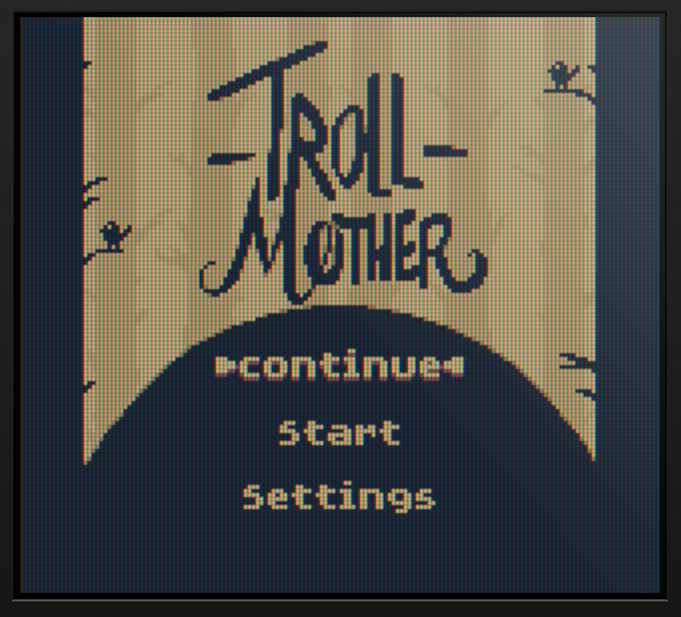
Earlier builds of the game had auto-save every time you returned to the schedule.
I don't know if it's the sheer amount of variables it needs to deal with, but it was buggy at best. I figure the game is short enough that fixing the save issues is a lot of work for very little payoff, so it's probably never coming back.
The settings were also replaced with a short checklist as you start the game. There aren't enough settings to really warrant segregating them off.
Finally, I want to recommend the Credits sequence. I'm not sure anyone's actually bothered with it. If nothing else, you'll get to experience all the music in the soundtrack.
Get Trollmother
Trollmother
teach your son the way of the trolls
| Status | Released |
| Author | Trollkonst |
| Genre | Simulation, Interactive Fiction, Role Playing, Visual Novel |
| Tags | 2D, Fantasy, Folklore, Game Boy, Pixel Art, Retro |
More posts
- Trollmother 1.01Nov 02, 2023
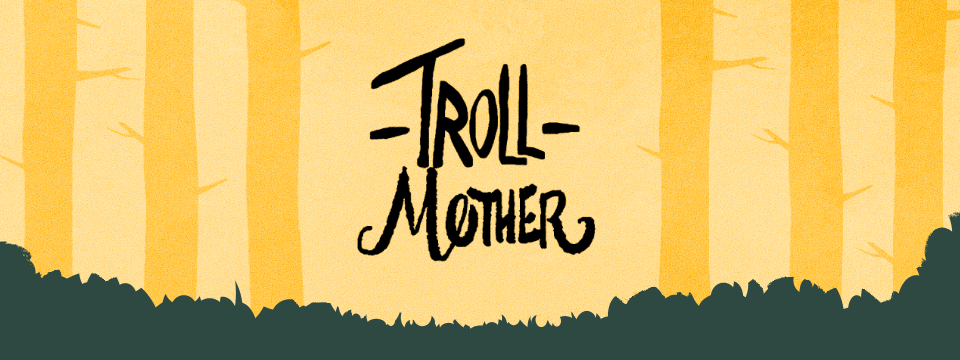
Leave a comment
Log in with itch.io to leave a comment.